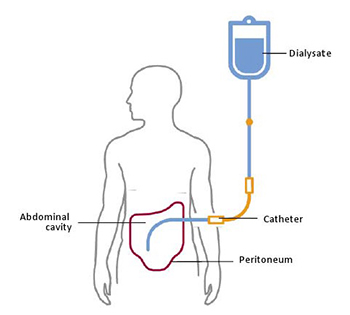
If broached, peritoneal dialysis might be a better option
It’s an unforgettable, life-changing moment when someone learns that their kidneys are functioning so badly that dialysis or a transplant will be necessary to survive.
 “In some cases, the patient has lived with kidney disease for years and has known this day would come. With others, the disease has been mostly asymptomatic, so it is more of a shock. Either way, it is a difficult conversation. There is a sense of loss when organs fail,” said Dr. Raj Mehrotra, head of nephrology at the University of Washington School of Medicine.
“In some cases, the patient has lived with kidney disease for years and has known this day would come. With others, the disease has been mostly asymptomatic, so it is more of a shock. Either way, it is a difficult conversation. There is a sense of loss when organs fail,” said Dr. Raj Mehrotra, head of nephrology at the University of Washington School of Medicine.
That conversation is crucial to set the patient’s expectations about options for care and to empower that individual with information to decide which care makes the most sense, he said.
Given the gravity, it is disconcerting that one study of the patient population showed that 100% had been told about in-center hemodialysis, but only about 30% had been told of peritoneal dialysis, the stay-at-home, do-it-yourself option.
“The wheels of our healthcare system have long been greased to get patients into that hemodialysis chair,” Mehrotra said. “It is starting to change, but many people who might want to dialyze at home are not told they have that choice.”
With peritoneal dialysis, the abdominal lining (peritoneum) is used to filter waste products from blood. A cleansing fluid flows through a catheter into the abdomen, and the filtered waste fluid flows out and is discarded. This process requires several filtrations a day, which can be done at home on the patient’s schedule.